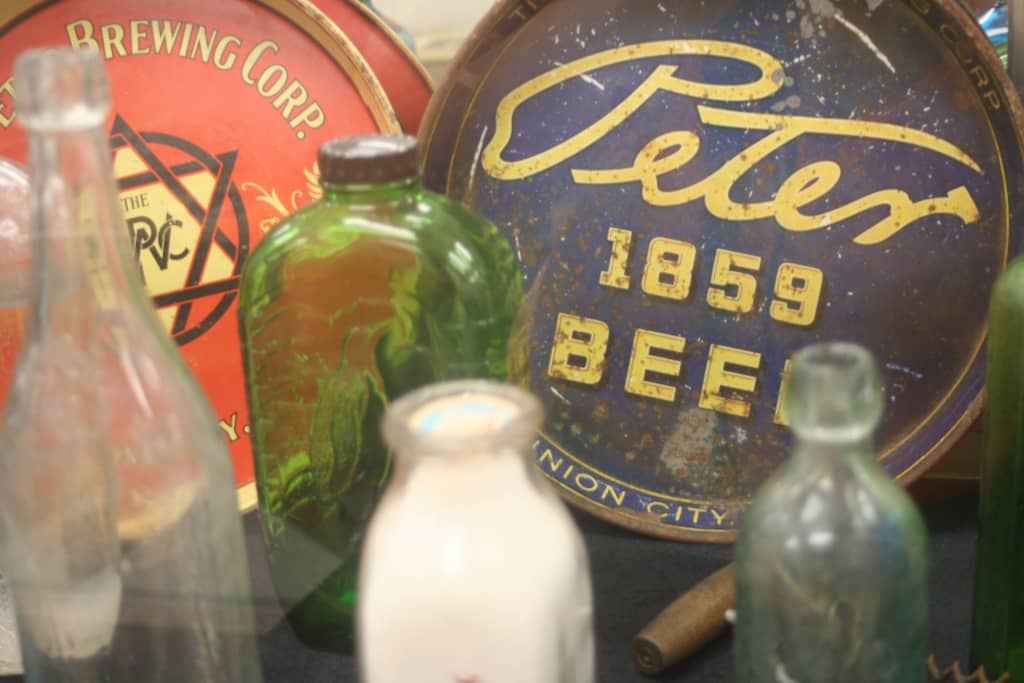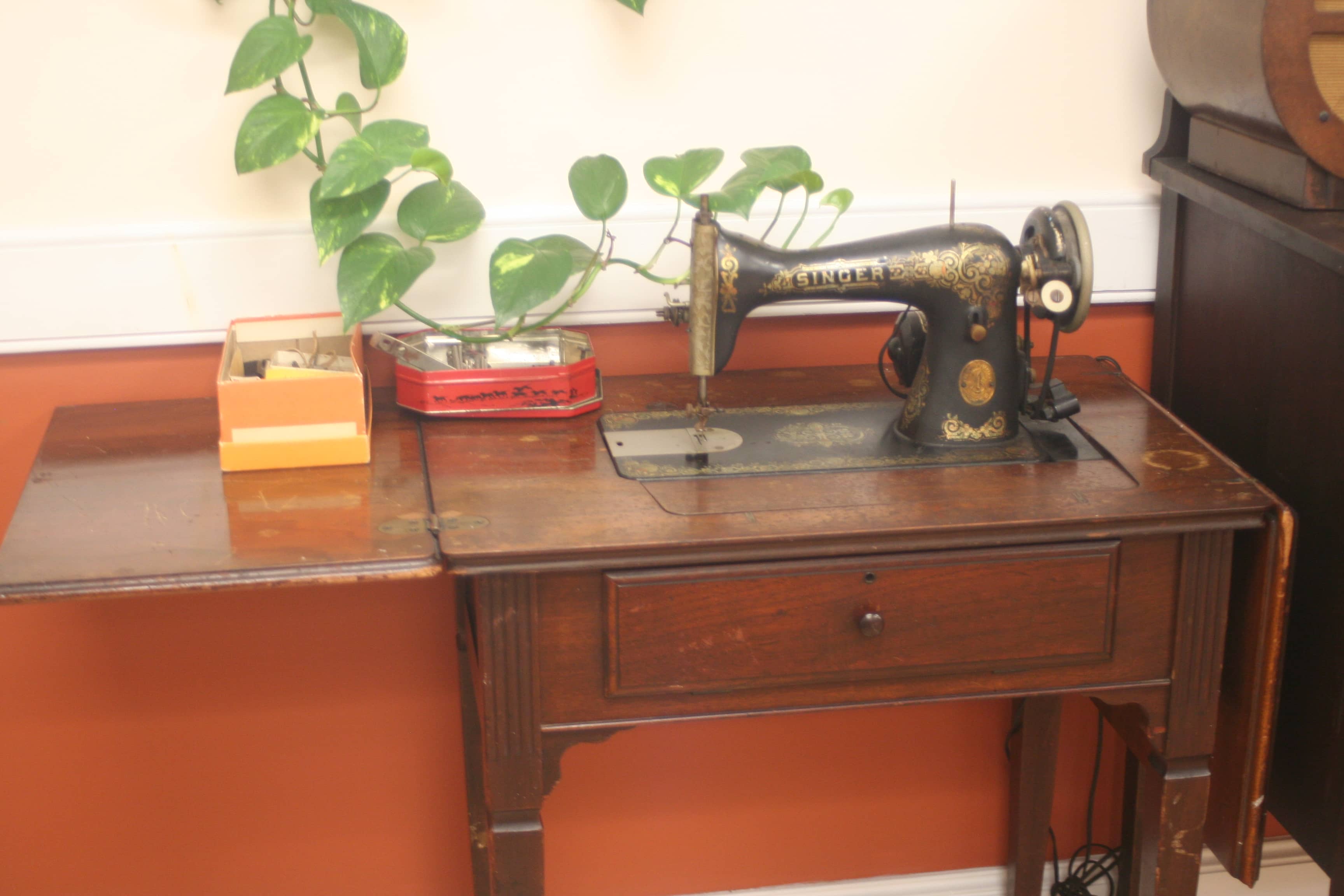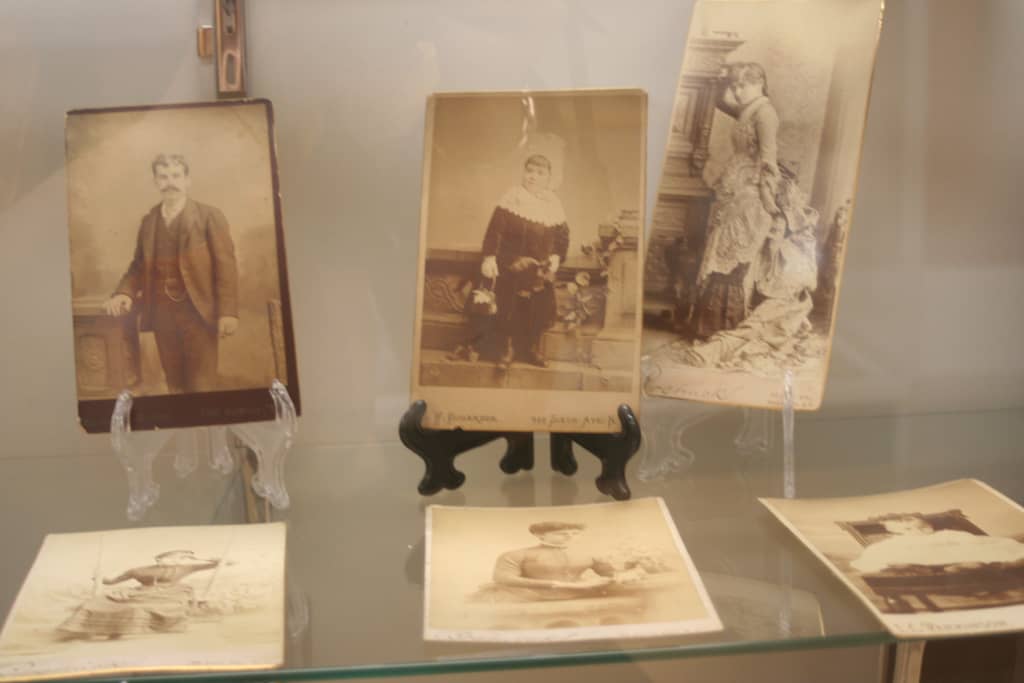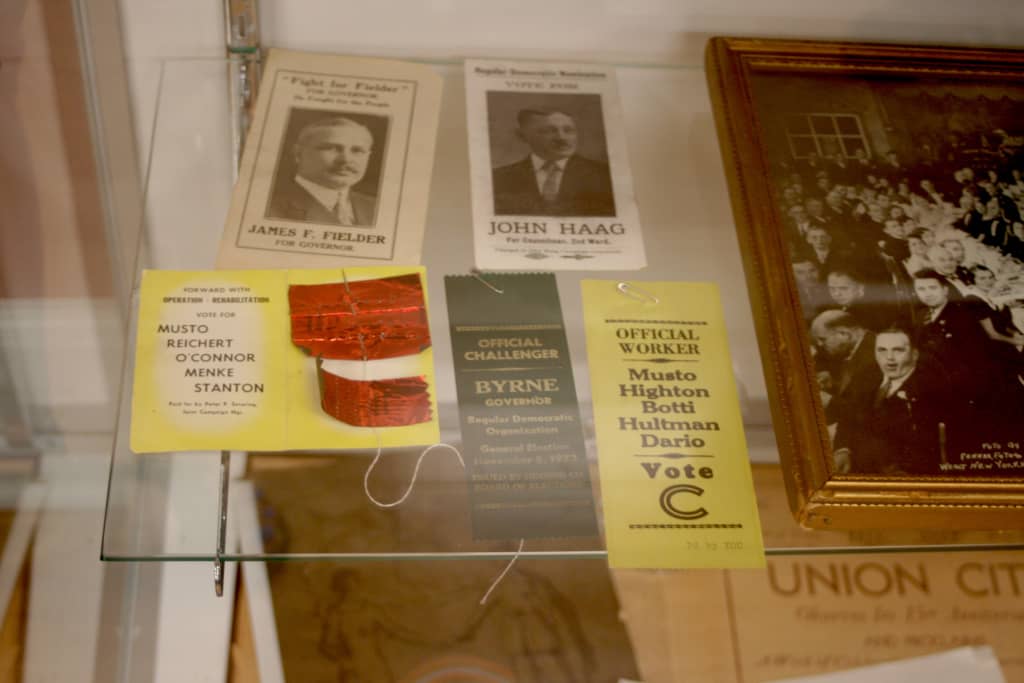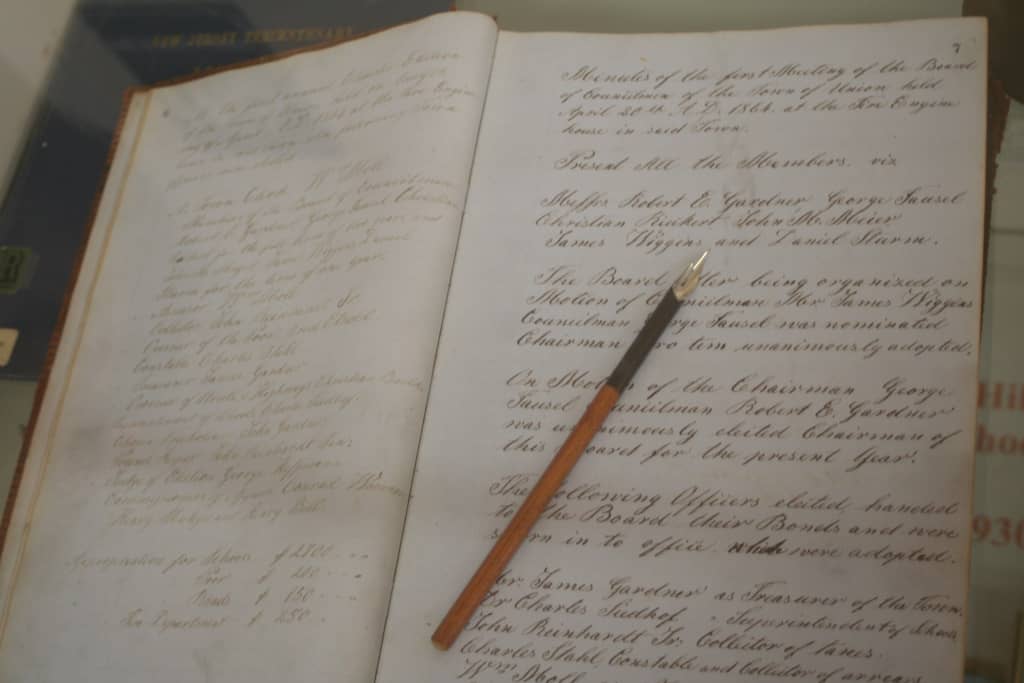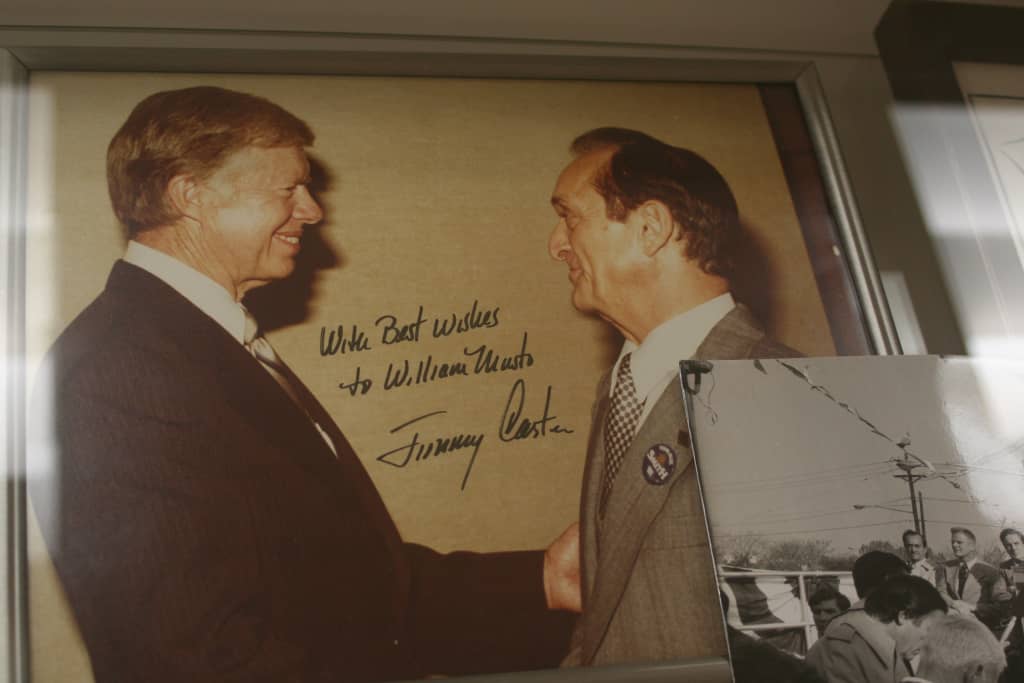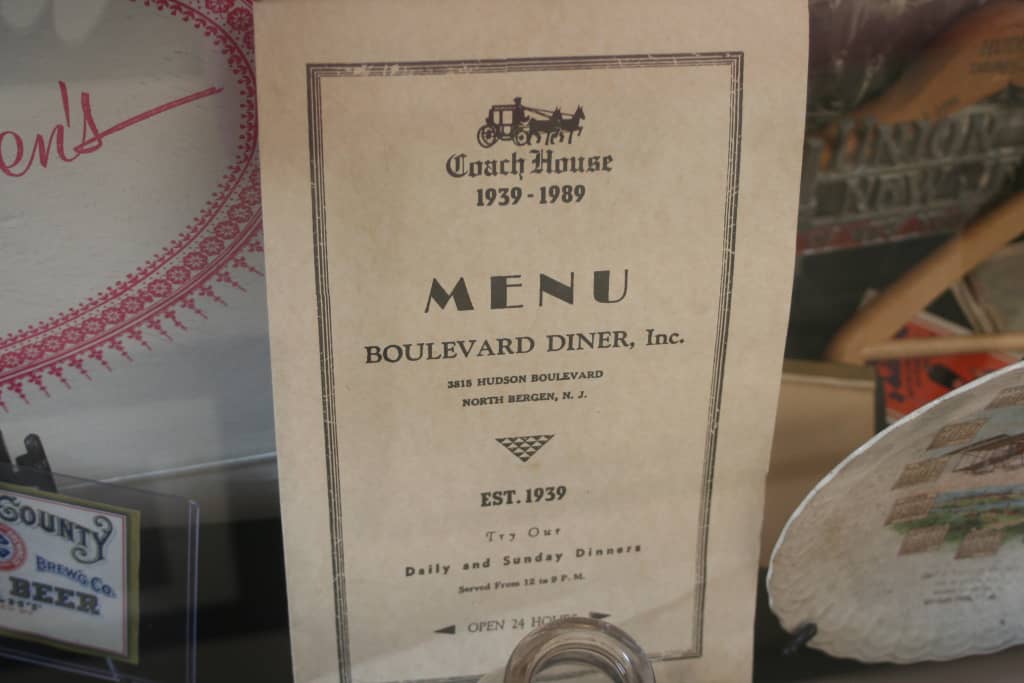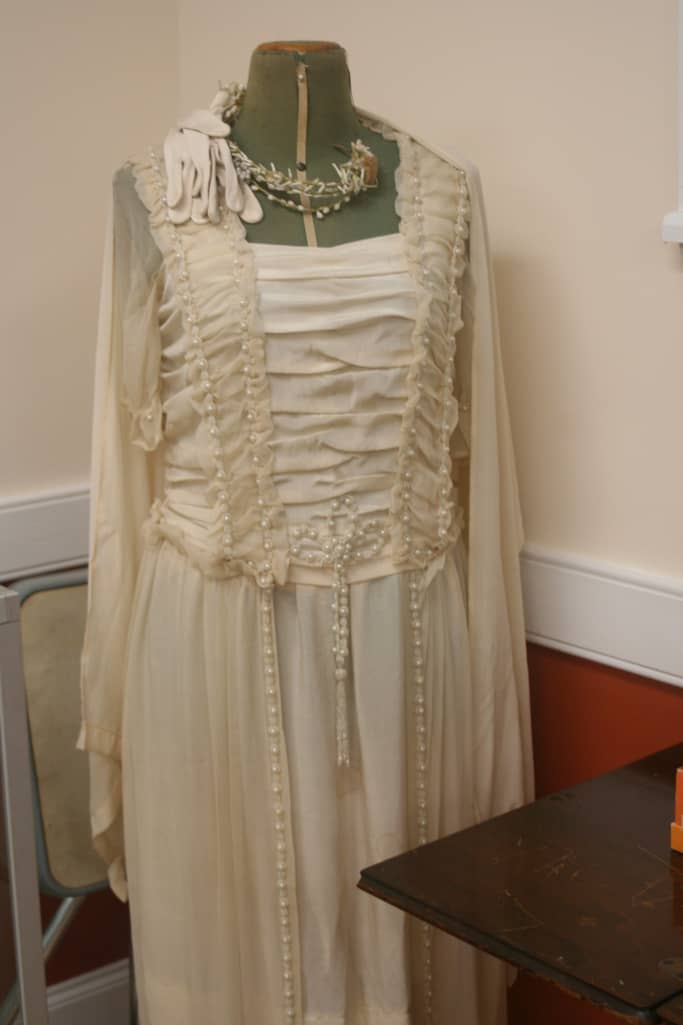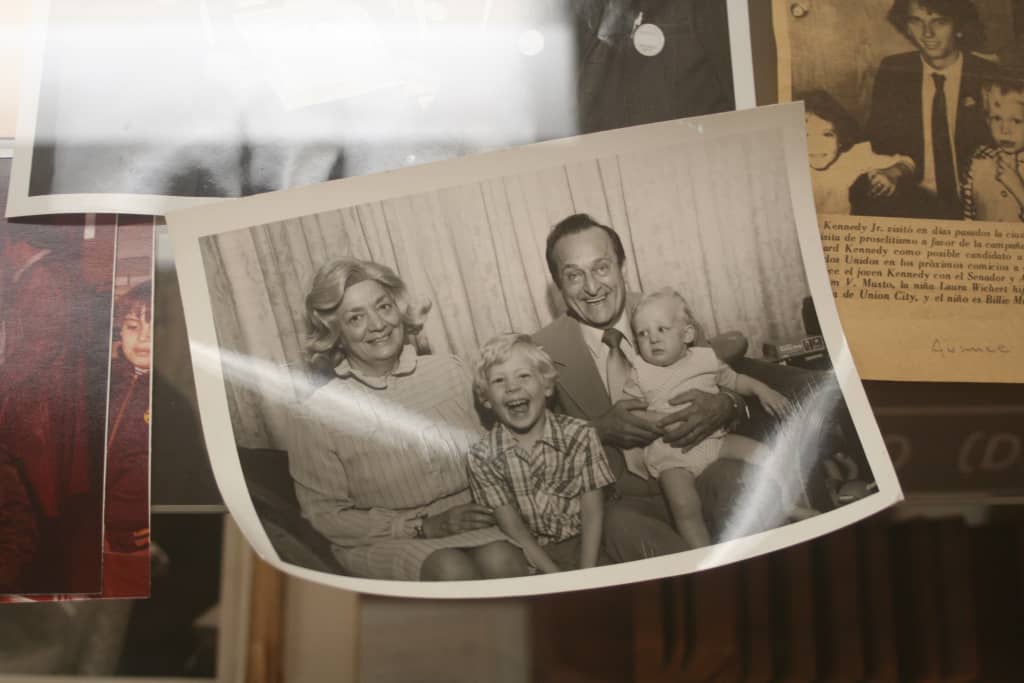Lyda and Manuel Rodriguez wanted to see America for their honeymoon. They married in 1949 and chose Miami as their honeymoon spot, although the Miami of that era was significantly smaller and less urban than Havana. But the Rodriguezes weren’t from Havana – they were from Fomento, a small town nearly four hours from Havana, and they wanted to see America.
According to Yolanda Prieto, a New Jersey author and professor who wrote the definitive history of the Northeastern Cubans, Lyda and Manuel were the first Cubans to move to Union City. They arrived after meeting a woman from North Bergen, which borders Union City to the south (and, God bless Hudson County geography, to the north), who Prieto identified as Florence Colarusso. Colarusso talked the place up enough on a ride to New York City that the Rodriguez family investigated and found dozens of factories, but increasingly few people to work in them.
Post-Columbian Cuba, the Caribbean’s largest island and the last to leave Spanish rule, has always been a political mess. The local creole Spanish rebels, the Mambises, acquired “independence” by hacking their fellow Spaniards to death with machetes in a brutal war that looked nothing like the comparatively disciplined divorce between England and America. The Mambises were so violent and ruthless that the communists governing the island still use them in propaganda today.

Their “by any means necessary” spirit suffered setbacks as Washington waffled on whether it wanted to acquire Cuba, but ultimately triumphed in a frenzy of patriotism stoked by the writings of Cuba’s “Apostle” José Martí and Latin American warmongers like Simón Bolívar. Besides William Howard Taft, nearly every leader Cuba has tolerated since independence has been either an irrelevant technocrat or a power-hungry general.
This would have been true of much of the territory of modern America but, unlike regions like Texas, the Cubans did not insist on annexation, choosing sovereignty over prosperity.
That is not to say that Cuba never had elections. In Lyda and Manuel Rodríguez’s lifetime, 1940, Cubans elected their first and only president of color: Fulgencio Batista, a populist soldier who had risen through the ranks of the military to wield significant power before gaining the support of the people. Batista oversaw a democratic administration from 1940 to 1944 and lived for some time in the United States before returning, this time to establish an unelected military government, in 1952.
Batista’s second regime defined itself by its friendliness to the United States, inviting American businessmen – including many from the greater New York City area belonging to what can be charitably described as ostracized Italian-American business communities – to invest heavily in Havana’s tourism industry. The policy created a significant middle class as well as deeper entrenching the well-landed elite. In the nation’s western half and small-town center, the Batista regime meant that a boy like my grandfather, the impoverished son of a degenerate gambler with a third grade education, could maintain a business, a bicycle shop and repair, with no government intervention.

Batista did absolutely nothing to benefit the nation’s east. Santiago de Cuba, Fidel Castro’s hometown, was left behind, Oriente province barely afloat as a labyrinth of dirt roads and mud puddles a century behind the rest of the country. These forgotten people, many of them illiterate with little access to state education, resented the extravagance of Havana, by the mid-1950s a top destination for international celebrities and entertainers.
Fidel Castro was comfortable. He grew up the son of a wealthy Spanish white farmer, part of the landed aristocracy oppressing the poor, largely black people of Oriente. His father’s wealth allowed him to study at the University of Havana, where he learned Cuban law and found, amid multiple populist movements swirling in the belly of the capital, an opportunity to take advantage of national discontent.
Castro and a band of fellow mostly white elites – including the ethnic Irish Ernesto “Che” Guevara and his brother and personal executioner Raúl – spent much of the 1950s hiding in the mountains of Cuba and waiting for more popular and charismatic opposition leaders to die. José Antonio Echeverría, the leader of the popular Revolutionary Directorate student group, died in an assassination attempt against Batista in 1957. Frank País, the urban equivalent to Castro – which is to say, the man fomenting an armed insurrection in places where people actually lived – was killed the same year in Castro’s native Santiago while Castro played conquistador in the middle-of-nowhere Sierra Maestra.
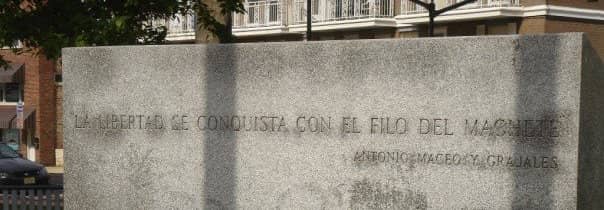
One by one they fell, kamikaze deaths chipping away at Batista’s grip on power until finally, listlessly, Batista got on a plane to the Dominican Republic, abandoning the nation to a fate of economic, cultural, and moral decay that has yet to relent. Behind Batista, Cuba’s wealthy elite followed: the Bacardis, the Fanjul sugar family. The people who had the money and influence to stop Castro used that power to walk out on the country that had given them so much, leaving the Bastista-created middle class and the poor to fight for survival.
Castro used labor camps and firing squads to eliminate anti-communists, Christians, LGBT Cubans, writers, musicians, petit bourgeoisie (small businessmen), men with long hair, Elvis fans, and nearly everyone outside of his white communist elite throughout the 1960s. The full devastation of Cuban society at the hands of the Castro regime is outside of the scope of this article but, for reference, historians have confirmed the deaths of at least 10,000 people at the hands of Castro’s firing squads, a tiny number compared to those killed by lack of access to healthcare, attempted exile in the Caribbean, prison torture, “accidents” in labor camps, and other communist extermination tactics.
The Cubans of Fomento, far from both Havana and Oriente, had no rush to get to Union City during the Batista era, and those who arrived said they largely felt out of place. They were not arriving with any Schiffli machine job skills and could barely communicate, though the first wave to arrive rapidly learned these skills and passed them down.

A unnamed woman speaking to Yolanda Prieto described the scene in Union City in the 1950s:
When we got here, there were no Hispanics. Only a handful of Puerto Rican[1] families and they helped us a lot. … Some Cubans who came early on worked hard and were successful. But many were not. It was very hard to find apartments because of discrimination. We were seen as ‘problematic.’
The woman went on to say that discrimination was unpleasant, yet did not prevent Cubans from succeeding. “No matter how difficult it’s been, I still think this is a wonderful country! There are so many opportunities.”
She would soon be joined by thousands of Cubans who fled communism without a choice, seeking American territories previously explored by their brethren that could offer jobs. The desperate refugees and desperate Schiffli machine owners were a match made, if not in Heaven, at least in New Jersey.
“I got stuck in that freezer fOR 15 YEARS“
Freddy Cruz was cold.
It was November 8, 1959, and he was wearing “a little suit, good quality but from a tropical country, you know? Something like silk.”
Cruz had just left Fomento and was trying to get a ride out of New York to Union City, where his two aunts lived. He lives in Florida today – a fact for which he sounds tremendously grateful during our autumn (or as they call it in Florida, “summer”) phone conversation – but he spent 15 years in Union City, mastering the Schiffli, the English language, and the congas.
All of that was a distant future on November 8, 1959, however, to 19-year-old Freddy Cruz, wearing nothing but his fancy clothes that were “definitely not wool or anything.”
Cruz had to wait a year after the Revolution to leave the country, which he described as a long time.
“I took so long because I had to wait for them to let me out. [My father] was a career soldier. He was not a partisan for Batista or [former presidents] Prío or Grau, but that got ferocious [for soldiers]” he narrates.
The flustered teen arrived at a New York airport – he doesn’t remember which one – and found that his aunt and uncle had forgotten that he was arriving today: “The people who had to pick me up, my aunt and uncle, I don’t know – they missed the bus, they didn’t understand the date.”
“I show up at that New York airport with my little suit and my little luggage and without knowing anyone, the language, you know,” Cruz told me in Spanish. “I studied a little [English] in school – [in English] ‘Tom is a boy, Mary is a girl’ – but it’s not the same.”
“Some people in the airport spoke Spanish and that’s how I managed to get there. Turns out they were going to Union City, where I had to go. They took me from the New York airport to my aunt’s house on 38th Street,” he said. “When I got [there] with that coat, the cold snuck into every pore I had. So I climb the little stairs of the house and I press the doorbell and nothing. My aunt and uncle weren’t there.”
“I found one of those payphones up the block, like the ones Superman uses to change, and ay mamá … I had some change, some quarters or whatever from Cuba, but it worked,” he recalled. “While I was in the pay phone, I thought it was going to be warm, no way. I was freezing, thinking ‘what am I doing?’”
“That was my first experience here. Wow.”
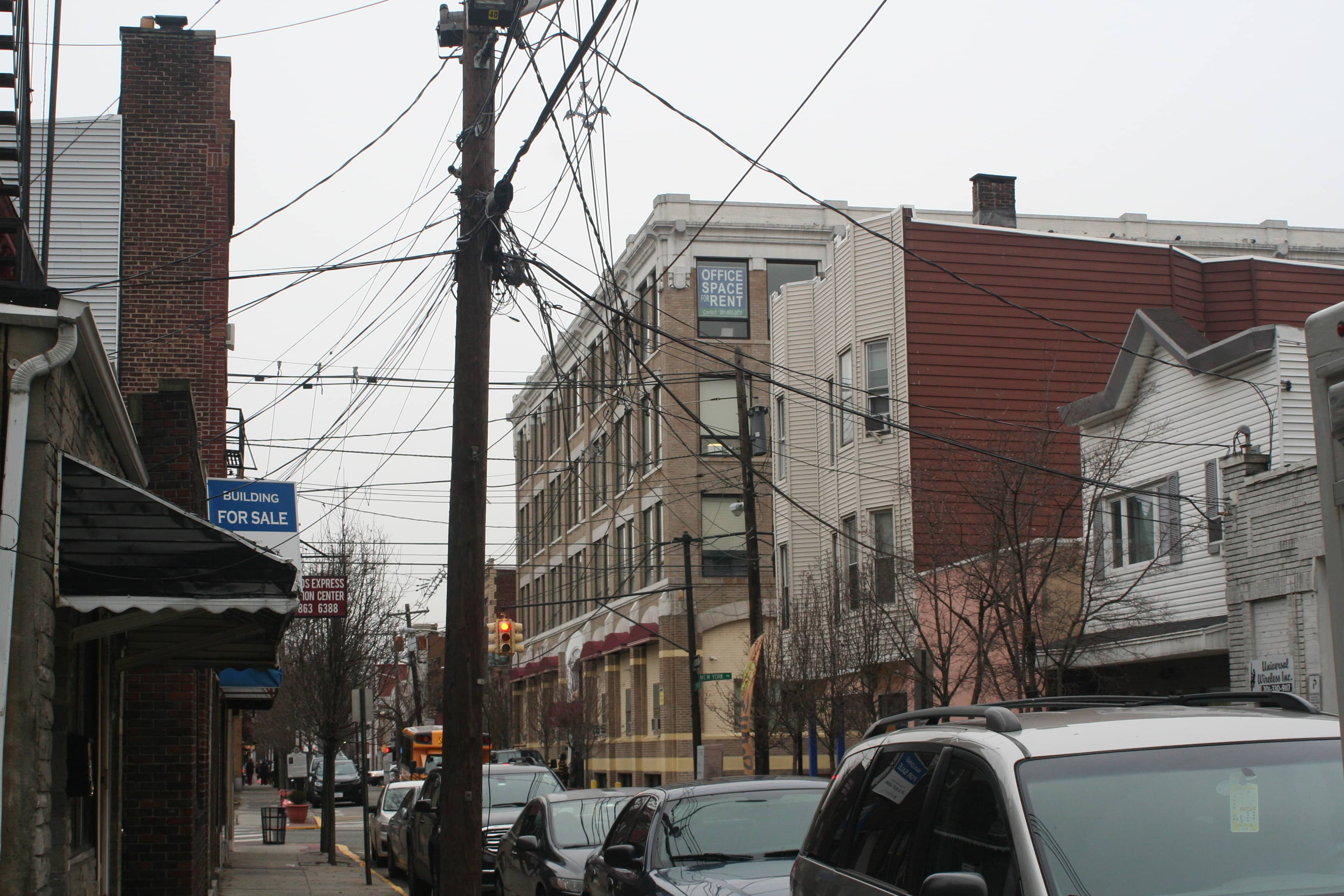
“So that’s it, I got stuck in that freezer for 15 years in New Jersey,” he noted, explaining that “there was a guy married to my cousin who worked in that embroidery thing” and got him his first-ever job.
“I learned from an American who was like a thunderbolt, lightning fast, a nervous American,” he recalls. “There were in that location 3-5 machines and it was about half and half Americans and Cubans, there were plenty of Cubans there already.”
The Cubans working embroidery when Cruz showed up already spoke some English and helped integrate the new arrival. Cruz recalled that the Americans and established Cubans generally got along, and the established Cubans helped the new ones learn the ropes.
“By the time I got there the ones [Cubans] who had been there a while already knew a little bit of English and they got along well with the Americans. There was always someone who had a different personality, but generally, it was a good environment, people got along,” he said. He notes that a small number of other Latinos, mostly Colombians, also worked there.
Cruz worked a nighttime 12-hour shift initially, where he learned the Schiffli, before being promoted in six months to a 12-hour shift that he left the house for at 7 a.m.
“It’s like a sewing machine but 15 yards [of thread] so when the threads empty, depending on the amount you are using … you have to take them out one by one and refill them with thread,” he explained. “The guy who watches the machine is called a [in English] ‘watcher’ … if it breaks a thread, he has to immediately change it otherwise the machine doesn’t stop. And on the second floor we had the ‘menders’ who fixed the errors the machine made on a sewing machine.”
“So that was the job, refill the thread… whatever the design, a flower, an eagle,” he noted.

His factory manufactured a variety of things: fabrics for custom dressmaking, patches for the military – “during that Vietnam thing, that was horrifying how many military emblems we made” – tablecloths, elaborately designed curtains.
“The Cuban who showed up there without knowing the language, you already know, it was easier for them to go in there,” he said. “You could learn the work fast, it wasn’t something that, you know, is too hard, and that’s why I think such a large volume of Cubans got into the embroidery thing.”
When he was done for the day, Cruz would go home and practice the conga. He eventually joined a band and had the time to regularly perform despite the arduous factory work – “youth, you know how it is” – and used his skills to find work in Florida.
Joining Cruz that decade would be not just thousands of Cuban refugees, but European immigrants who caught word of the renaissance of embroidery after the existential threat of suburbia subsided. As former Union City Commissioner James Lagomarsino describes in Union City, U.S.A., “it was good living. It was good hours, embroidery was on every corner. You couldn’t live in Union City without working embroidery. Everybody that lived here worked in embroidery.”

Many of their stories and some of their craft remains preserved in Union City’s historical museum, a floor of the old town library[2] that now houses the William Musto[3] Cultural Center. An elaborate lace dress hangs in the corner, near a vintage sewing machine – displayed in a crowded, near-windowless room stuffed to the brim with municipal treasures.
Among the most eye-catching items I noticed were old police badges, pre-Prohibition brewery artifacts, photos of prominent families from the early 20th century, Musto campaign pins, 1800s commissioner meeting minutes, and an old menu from my favorite diner (technically in North Bergen).
When I walk in on an August day, I get a feeling I suspect accompanies walking into your grandparents’ attic if they had been born in this country and not forced to leave nearly all their possessions behind in a communist island dungeon.
Luigi Novi, an illustrator and historian who attended the museum that day, told me his mother to this day displays a vintage sewing machine on her front porch.
Novi’s family, he said, is a recent arrival compared to many in the Italian-American community in New Jersey. His mother and aunt, identical twins, arrived in the country in the early 1960s and went on to build longtime careers in textiles, for much of their careers sewing dresses. By then, Union City’s textile factories were full of Cubans, with whom they interacted and shared in Americanization.
“My mother and her identical twin sister came here in the early 60s. One of the things I remember them describing very clearly is the day JFK was assassinated,” he told me, “how all the Cuban women at the dress factory stood up from their sewing machines, got down on their knees, and started praying when the news came in that he had been shot until the news came in that he was dead. And they closed the factory for the day.”
Like the Cubans, the Italians were a tight-knit community, and his mother soon met her father through relatives.
Relatives, neighbors, people you met at the grocery store, “a guy married to my cousin who worked in that embroidery thing”: these were the people you needed to know to get a job in Union City during the embroidery boom. Word of mouth spread that jobs were available in the city and ensured that the boom occurred in the 1960s, nearly a century after the first reservoirs brought immigrants to the city.
That decade is still considered the era where the North Jersey embroidery industry reached its peak. According to New York Times reporting from the decade, North Hudson was home to over 1,000 Schiffli machines at the time – by then, nearly 100-year-old technology and still state of the art – employing thousands in the state, but most in the North Hudson area. While the industry experienced a dip in profits in the first half of the decade, the Times estimated “a 50 per cent increase in industry sales by the end of the next six years,” or the rest of the decade. Even the small dip in 1963 left the embroidery industry making twice what it made in 1950, at the height of the suburbanization of America.
In its heyday, North Hudson housed 90 percent of the embroidery industry in America.
Abuelo, my grandfather, got home at around 4 p.m., just in time to settle in before Primer Impacto. He wore a plaid shirt – blue patterns, red patterns, but the green with the red stripes was his favorite – with a ratty pair of black slacks and shoes Abuela would yell at him to please throw away and get new ones, we have the money, it’s embarrassing. He rounded out his look with Grecian Formula, a black plastic lunch box that looked like it held an electric drill, and beige compression socks he insisted kept his circulation going while he carried boxes.
Abuelo worked at the K-Mart storage facility in Secaucus, taking the bus from Union City every morning rain or shine. Brand loyalty meant something else to him. Unlike many foreign-born people who become Americans, Abuelo desperately wanted nothing to do with business ownership. He had been a small businessman in Cuba – a petit bourgeoisie, sentenced to two years “volunteer work” in the camps – and had lost the bicycle shop he built saving money since he began working selling peanuts at the movie theater at age eight to communism. Communism was very real to him and he hoarded food and cash in anticipation of it befalling the United States at any time. My abuelos’ apartment had a back room he used to store supplies for the coming revolution. For some reason, he appeared to consider apple juice the most important good in the event of a communist coup, hoarding dozens of bottles of the stuff in the back.
My abuelos lived in an apartment in downtown Union City behind Cuba Bakery, which is still there, but the owner was an old curmudgeonly Spaniard we called el gallego who was older than my abuelos, so he must be dead. To get to the apartment, you had to first walk through the door next to the bakery entrance, then walk through a narrow corridor in the bakery dividing towers of baking pans from the industrial-sized ovens. Antonio worked the ovens, so we would always have to say hi to Antonio before getting to the door that looked like it opened into a broom closet, but it was my abuelos’ apartment. The apartment always smelled like fresh bread.
Abuelo refused to buy a home, a car, or a business and he was grateful to his landlord, public transportation, and K-Mart for letting him avoid the humiliation he experienced in Cuba a second time. He would never say that communism was the reason he refused to get a car, instead warning, “un carro es otra mujer” – a car is another wife.
Abuelo loved K-Mart so much he, a virulent anti-communist, would join his buddies Quintanilla and Carbonell on “field trips” to who-knows-where to strike on behalf of his labor union. One day, when I was in about 5th grade, Abuelo showed us a VHS tape of his participation in a union rally, proudly, an anomaly in a country that for decade equated unionizing with communism. He and his work friends, all older Cuban men, none of whom spoke English, were cheering and walking a circle – a picket line, holding signs in English demanding higher wages and better benefits, I suppose. I remember asking him what he was doing, and he said “we just went on a little trip.”
“What does your sign say?”
“Who cares? It’s for K-Mart. How do I look on camera?”
Quintanilla and Carbonell were loyal phone buddies after the work day ended. Abuelo would shower and change after getting home and eat dinner while watching Primer Impacto. When Walter Mercado was done with his horoscope, Abuelo would go sit on his bed and pull the phone off the wall and call Quintanilla to complain about Fidel Castro. They would laugh dreaming about the day Fidel Castro died, hang up, and Abuelo would repeat the process with Carbonell.
I don’t know much about those guys, but I can tell you they voted Republican.
My grandparents, with my teenage father, arrived in New Jersey from Spain in 1973. They weren’t connected, so it took about a decade to get out. My grandmother’s sister and family helped them escape, in part with the hope that the elder Martel, a former business owner, would use his savvy to open a storefront in Union City like so many other Cubans had in the past decade. But he refused. He would not be fooled again when a communist took over the White House.
But he was grateful to America for what it was at the time, if not what it would eventually become under the inevitable communist regime, and decided to devote his life to an American company. He worked at the K-Mart facility for almost the entirety of his time in the United States, which ended in 2010 when he died at age 87.
Abuela was never a career woman. One of 11 children – 13 if you count the stillborns – the woman of the outskirts of Cárdenas were, before Cuban society ended in 1959, expected to be loyal wives and hard-working mothers. But this generation’s fate would be another, and after her own stint in “volunteer” labor camp slavery, she left with her husband and arrived in Union City, where a second income could go a long way.
Abuela worked for some time in a textile factory in Secaucus before she retired, too, alongside my mother (her daughter-in-law), who worked there for a year in 1983.
“I was going to get married, so I needed to save money,” my mother, Idania Martel, recalled when I interviewed her in Spanish in December, noting that my grandmother got her the job. She hinted at the fact that my grandmother in part also did this to keep an eye on her future daughter-in-law, a divorcee six years older than her precious boy – the only one of three children she didn’t kill in the womb.[4]
Interviewing your own mother feels wrong, perhaps for her, too. My husband was off to a basketball game this afternoon and we – myself, my mother, my infant daughter – were having girl time. The interview took place as I waited for the dye my mom had requested I apply to her hair to set in, and she, typically a chatty and opinionated woman, reverted often to one-word answers. Nobody had ever asked her what factory life was like, or her opinion of global trade policy – not because she couldn’t handle the conversation, but because she lived her life in the shadow of a man who feared that someone would notice she was smarter than him.
When I finally got her comfortable enough to answer questions about her own life experience with confidence, she told me the tablecloth factory was divided neatly by gender: men managed the Schiffli, and women managed the individual sewing machines used to mend.
“[There were] lots of Cubans, men and women, most were old women, some sewed, on the one side the women sewed and on the other side were the men,” she recalled. “The women sewed and folded the tablecloths so the men had these big machines, they would put the spools in for the women. Two men would put in the spools into the machines for the women, the fabric would come in already with little holes in it.”
“The machines were big, with a big spool and they put the tablecloths in there. The small sewing machines were used to make the helm. The women didn’t use that machine. It took up the whole wall,” she said. “Eso era[5] embroidery.”
She had never heard the word “Schiffli” before.
“Most were Cubans, older Cuban women and a few men. On the other side there were 3-4 men, a boss, un boss [she repeats in English] who gave you the orders to check. There was one Jewish man who was the boss, young guy. They gave us the order and we completed it. There were two Americans and one Puerto Rican,” she said of the makeup of the factory. She emphasized that there was “no racism there,” but “they got along better on the men’s side because the women were always bickering. They were all Cuban.”
The factory break room was a bazaar of side gigs.
“They sold everything,” Mom said. “Avon, cookies, children’s school stuff.” For $10 a week, a coworker would give you rides to and from work if your car broke down. For free, younger Cubans and Americans would help the older ones with English-language paperwork needed for insurance, paying bills, union documents, whatever came through.
I pressed her for some factory gossip from 30 years ago, and she was happy to oblige.
“They didn’t get along because fulana was in love with menganito[6]. There was a woman who was in love with some guy, some ugly guy, which I saw him a while back on Summit [Avenue, downtown Union City]. They claimed he had this girlfriend, this woman who was very self-important so they hated her, envied her. She walked around with her heels on,” Mom said. At this point, she had abandoned one-word answers, relishing in the gossip as if it had happened yesterday. She emphasized that the American women were just as likely to gossip as the Cubans, and that they all gossiped together, with little regard for their differences.
“I thought it was dumb so I wasn’t paying attention,” she hastily added.
The woman who thought it was a good idea to wear heels to a textile factory job got into a fist fight with one of her “envious” coworkers one day over who got to sit on what chair in the break room for lunch.
“We all sat there and everybody had a place, and if somebody took another person’s spot they would be mad, it’d be a whole mess,” she told me. “Everybody had a seat at the table but if you took somebody’s place they would fight you. One time there was a fistfight among the older women so we had to call the cha stua, the union people who took care of the place.”
“The what?” I reply, baffled by the gibberish obvious attempt to pronounce something in English. “Chad Stewart? A person named Chad?”
“No, mija, her name was Hortencia.”
“Who?”
“The cha stua. She represented the union.”
After hours of research [frantically searching any English language phrase that sounded remotely like cha stua], I have concluded that Hortencia was the union chapter steward representing the workers in that factory.
“Hortencia was up in everybody’s business,” my mother sighed.
Hortencia broke up the fight between the lady in heels and her coworker, who deliberately sat in her break room seat to start a fight.
My mother didn’t have much to say about the men’s side, which she moved to because “your grandmother wouldn’t leave me alone.” There wasn’t any gossip on the men’s side. My mother never operated the Schiffli machine; she was in charge of counting the tablecloths and ensuring the numbers on the orders were right before they were shipped out.
My mother worked in at least three other factories that she could remember: one, in Union City, that manufactured ties; a Bayonne factory that built windows; and one in East Rutherford, Bergen County, that made industrial foam stuffing for larger manufacturing.
“Almost all of us lived in Union City,” she noted, and she got every job through word of mouth.
“That’s how you got jobs back then. Oh, and if you were really desperate, there was always work at the hose factory,” she added. She did not recall why the hose factory needed so many workers or how she knew this information. People just knew.
These experiences were not unique to Cubans in New Jersey, of course. In Florida, Guillermo Álvarez Guedes, the Cuban exile community’s most prominent stand-up comedian, once told a joke about the factory melting pot in Hialeah, Miami’s industrial suburb: “We can’t explain how Americans, on Thanksgiving, can eat that flavorless turkey without rice, beans, and yuca. And they can’t figure out a lot of things about us. Americans still don’t understand why, in the factory women’s bathroom, there’s always an empty can of peaches.”
The implication is that the Cuban women working in American factories were much more finicky and delicate than their hardy American counterparts and used the can to wash themselves with water every time they used the bathroom, unused to the sweat of hard labor. Think the woman wearing heels at my mother’s factory.
Abuela sometimes kept an empty can of condensed milk by the toilet, perhaps smaller because, at home, a bigger can just wasn’t needed.
As frivolous as some of these memories may sound, to the Cuban refugee community, the opportunity to have the time and energy to gossip after surviving a deadly revolution was a luxury. The women of the Secaucus factory felt accepted enough by their bosses and their American coworkers to feel comfortable creating a culture and building roles for themselves in the factory community. Factories offered normalcy, stability, and a sense of belonging that is essential to the process of integration to refugees with little other direction in the ways of American life.
Like my grandfather, my mother also had nothing negative to say about unions, which were a critical part of the factory ecosystem.
“I have always had a good union. It works, I think. It works to have a union because without a union, in a private place, you’re screwed,” she told me.
“You don’t feel that there is a conflict between that and being a capitalist?” I asked. My mother, like most Cuban exiles, is a hardline anti-communist, but not one particularly aware of boutique free-market economic theory.
“No. What? Being a capitalist? No,” she replied, with confusion. “No, that has nothing to do with socialism, it’s just so that the worker has someone to defend them. If you don’t have a job, they can fire you whenever. That’s not fair. To throw you out for no reason, it’s unfair if you are working well.”
[1] Puerto Ricans – “Nuyoricans,” who made their home up north – were indispensible for Cuban settlement in the Northeast, and often a forgotten part of our story. Cubans arriving from the island had never seen snow and had little to no understanding of how to handle cold weather. They certainly did not possess coats and had little experience cooking with winter squash, cranberries, or other common Northeast American fare. Puerto Ricans, who understood the Spanish language as well as the New York job market, played a pivotal role in acclimating the new arrivals.
Puerto Rican support to the Cuban exile community often goes unspoken because the majority of Cuban exiles landed in Miami, where they found previously established Cubans and a culture and climate more similar to home. One notable exception to this is the 1979 film El Super, which narrates the day-to-day life of a Cuban exile building superintendent in upper Manhattan. The superintendent’s friends are almost all Cuban except for Bobby el Boricua (“the Puerto Rican”), the friend the super goes to most often for emotional support. Bobby often tries to make the super feel better by noting that, even having the option to go back, he had not visited Puerto Rico in nearly a decade and living far from home is preferable to him so long as he had friends and family, even in the middle of one of New York’s most brutal blizzards on record.
[2] The former downtown Union City library and its twin on the other side of town were among the 36 libraries Andrew Carnegie built in New Jersey, both before the merger of Union Hill and West Hoboken.
[3] Mayor Billy Musto was largely responsible for incorporating the Cuban community into Union City – perhaps, as an Italian-American, seeing in them another iteration of his ancestors seeking a better life. A fiery and colorful character, Musto set the standard for mayorhood in the city that its current leader, Brian Stack – who named the cultural center – openly aspires to, having named the cultural center after him. Outside of Union City, Musto was largely a curiosity, as the following, from his New York Times obituary, exemplifies: “He was so popular in his hometown that the day after he was sentenced to prison in 1982 for helping mobsters and contractors pocket public money designated for schools, voters re-elected him anyway.”
[4] Abortions were illegal and highly common in the old Cuba. My other abuela, my mother’s mother, bled to death in my mother’s arms of a failed abortion at age 27. My mother was eight, the same age my grandfather began working full-time.
[5] “that was”
[6] Both of these words are used to mean “so-and-so.”
COMMENTS

